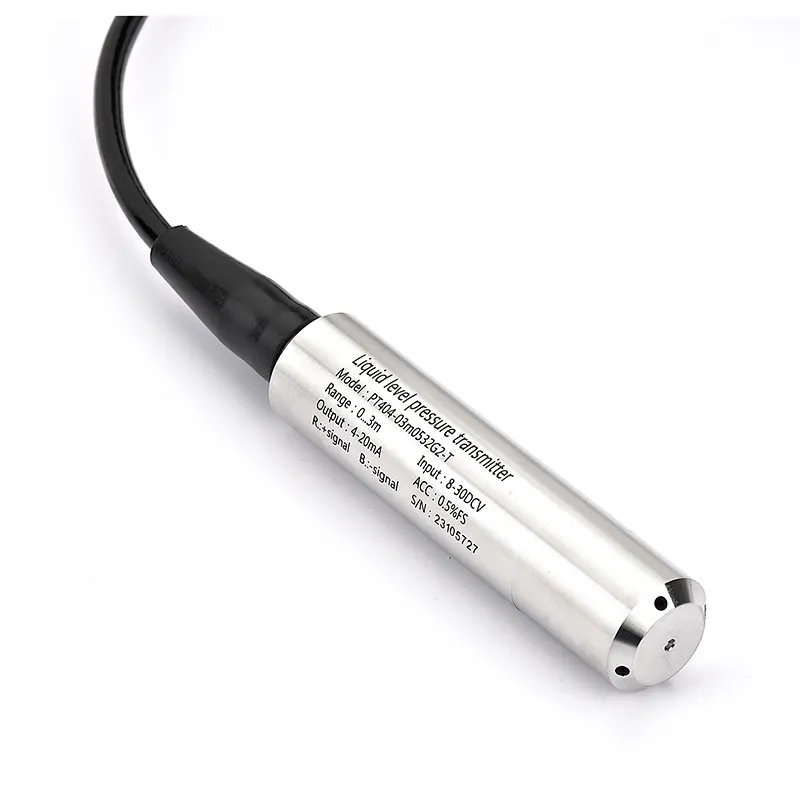What does a pressure transducer do?
2024-11-13
A pressure transducer is a sensor that converts pressure into an electrical signal. These devices are commonly used to measure the pressure of gases or liquids in various applications, including industrial machinery, automotive systems, medical devices, and HVAC systems. The primary function of a pressure transducer is to provide accurate and reliable pressure readings, which can then be monitored or used to control other systems.
How a Pressure Transducer Works

1. Pressure Sensing Element: The transducer has a pressure-sensitive element, often a diaphragm, which reacts to the applied pressure. The diaphragm may be made of materials like silicon, metal, or ceramics, and it deforms slightly when pressure is applied.
2. Conversion to Electrical Signal: As the diaphragm deforms, it changes the resistance, capacitance, or inductance of the sensing element. This physical change is then converted into an electrical signal, which can be in the form of a voltage, current, or digital output.
3. Signal Processing: The electrical signal is typically small, so it often goes through signal conditioning—such as amplification or filtering—to make it suitable for accurate readings or data processing.
4. Output: The transducer’s output signal represents the measured pressure and can be displayed on a screen, transmitted to a monitoring system, or used in automated control systems to make adjustments as needed.
Types of Pressure Transducers
1. Strain Gauge Pressure Transducers: Use a strain gauge attached to the diaphragm. When pressure deforms the diaphragm, it changes the electrical resistance, which is converted to a readable signal.
2. Capacitive Pressure Transducers: Measure pressure by detecting changes in capacitance caused by diaphragm movement under pressure.
3. Piezoelectric Pressure Transducers: Use piezoelectric materials that generate a small voltage when pressure is applied. These are often used for dynamic pressure measurements, such as in impact testing.
4. Resonant Pressure Transducers: Use resonating elements to detect changes in pressure and are often found in high-precision applications like aviation.
Applications of Pressure Transducers
1. Industrial Process Control: In industries like oil and gas, food and beverage, and manufacturing, pressure transducers help monitor and control fluid or gas pressures in pipes, tanks, and other systems.
2. Automotive Systems: In vehicles, they monitor pressures in fuel systems, oil, brake lines, and tire pressures, contributing to safety and efficiency.
3. Medical Devices: In devices like ventilators, blood pressure monitors, and anesthesia machines, pressure transducers provide critical readings to ensure patient safety.
4. HVAC Systems: They measure and control pressure levels to optimize heating, ventilation, and air conditioning system efficiency.
5. Aerospace and Aviation: Used to monitor fuel tank pressures, hydraulic systems, and cabin pressures.
Benefits of Using Pressure Transducers
- Accurate and Real-Time Monitoring: Provide continuous, precise readings that enable effective monitoring and control of pressure-dependent systems.
- Automation: Enable automated responses in control systems, enhancing safety and efficiency.
- Versatility: Available in various forms to suit different media (liquids or gases) and environmental conditions (such as high temperatures or corrosive environments).
Conclusion
A pressure transducer is an essential tool for converting pressure into an electrical signal, enabling measurement, monitoring, and control across many fields. Whether used in a hospital, factory, or vehicle, these devices help maintain system stability, performance, and safety by providing reliable pressure data.


